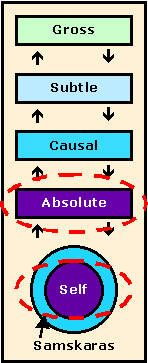Prana means energy, maya in this case means body or vehicle. The Chinese call it Chi, the yogis Prana or life force. Prana moves around the body through channels, called nadis. Some 72,000 reportedly, but who counted them, nobody knows. When we practice asana and pranayama, we are affecting Pranamaya kosha.
Prana enters into the body not only through food and water, but it also comes into the body via of the breath. One of the major benefits of yoga is that we become more and more conscious of our breathing, and eventually we learn to take proper deep breaths. Practicing diaphragmatic breathing, complete yogic breathing, and alternate nostril breathing are specifically designed to enhance the proper functioning of this second sheath. This leads to an increase of prana into our system which literally makes us feel more alive plus it invigorates and powers Pranamaya kosha.
Additionally, getting plenty of fresh air and sunlight is essential for maintaining the health of the vital force. Yoga texts often refer to the sun as the ultimate source of Prana.

The Pranamaya Kosha forms the energy body. The primary way to impact this kosha is through breathing. It is affected by the 5 kleshas as follows:
- Avidya (Ignorance): When the Pranamaya kosha or energy body has mistakenly identified the Atman with Prana, mind and/or intellect, it is impossible to discover the Atman’s true nature which is entirely distinct from this and the other four sheaths. This identification must be transcended before the yogi can proceed to discover their true Self.
- Asmita (Ego): When the ego becomes aware of the Pranamaya kosha and identifies with it, this prevents the exploration of it and the proceeding inward, to and through it to the remaining three koshas.
- Raga (Attachment): As Pranayama energizes the Pranamaya kosha it can become a rapturous experience that we easily become attached to. To explore the deeper aspects of Prana and Pranayama, we will need to achieve a state beyond the fluctuations of the ego, ordinary senses and the mind.
- Dvesha (Aversion): Sometimes attempting to going beyond the Pranamaya kosha seems like an epic fail and we may worry that we’re not anywhere near “getting it,” and maybe we still find altering our breathing to be surprisingly stressful. This creates aversion and it can be overcome by persistence and regular practice.
- Abhinivesha (Clinging to Life): This klesha will increase our identification with our energy body, resulting in a fear somewhat like suffocating. To overcome this identification we can practice a deep and abiding acceptance of our mortality. Whenever we refuse to cling we prepare ourselves to transcend this and the next three sheaths.
As noted in my last post as these kleshas are recognized and dissolved (or cleared) from the Pranamaya kosha, the next step is taken. As the remaining koshas are cleansed of these afflictions, the Atman (or Self), which is indescribable, is gradually recognized and eventually realized by direct experience; this is the goal of Yoga meditation, Advaita Vedanta, and certain Tantra practices.
Stay tuned, next: Further exploration of each Klesha and how it colors the Manamaya kosha.
Rae Indigo is ERYT 500
 Yoga Sutra (1.44)
Yoga Sutra (1.44)